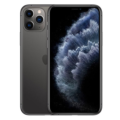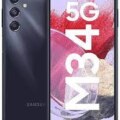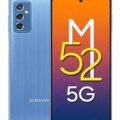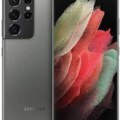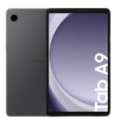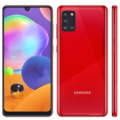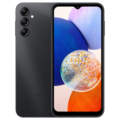- Home
- All Products
- Mobiles
- Apple iPhone 7 Price & Specs
Apple iPhone 7 Price & Specs


-
Processor: Apple A10 Fusion (16 nm)
-
RAM: 2 GB
-
Storage: 32 GB, 128 GB, 256 GB
-
Display: 4.7 inches
-
Camera: 12 MP
-
Battery: iOS 10+
Specs
General
| Device Type | Smart Phone |
| Model | Apple iPhone 7 |
| Announced | 01 September, 2016 |
| Released | 01 September, 2016 |
| Status | Available |
Network
| 2G Network |
850, 900, 1800, 1900 |
| 3G Network |
850, 900, 1700/2100, 1900, 2100 |
| 4G Network |
Bands - 1(2100), 2(1900), 3(1800), 4(1700/2100), 5(850), 7(2600), 8(900), 12(700), 13(700), 17(700), 18(800), 19(800), 20(800), 25(1900), 26(850), 27(800), 28(700), 29(700), 30(2300), 38(2600), 39(1900), 40(2300), 41(2500) |
| SIM <strong>SIM</strong> (Subscriber Identity Module) is a small card that contains mobile network subscriber's account information. This allows the phone using the card to attach to a mobile network. The SIM card is most commonly associated with GSM and UMTS mobile networks. Moving a SIM card from one phone to another allows a subscriber to switch mobile phones without having to contact their mobile network carrier. SIM cards can also be used by a phone to store limited amounts of data, such as phone numbers and text messages. | Nano SIM |
Design
| Type <strong>Design Type</strong> called form factor refers to a mobile phone's size, shape, and style as well as the layout and position of major components of phone. There are three major form factors seen in mobile phones => bar phones, folding phones and sliding phones. | Bar |
| Dimensions | 138.3 x 67.1 x 7.1 mm |
| Weight | 138 g |
| Material | Glass front (Corning-made glass), aluminum back, aluminum frame |
| Colors | Jet Black, Black, Silver, Gold, Rose Gold, Red |
Display
| Display Type <strong>Display Technology => </strong> A number of display technologies and types used in mobile phones => TFT (Thin Film Transistor), IPS (In-Place Switching), OLED (Organic Light Emitting Diode), AMOLED (Active-Matrix Organic Light-Emitting Diode), Super AMOLED (an even advanced version of AMOLED), Resistive Touchscreen (Resistive touchscreens contain two layer of conductive material with a very small gap between them which acts as a resistance), Capacitive Touchsceen (Capacitive touchscreen technology consists of a layer of glass coated with a transparent conductor) | IPS LCD |
| Size | 4.7-inches |
| Resolution | 750 x 1334 pixels |
| Display Colors <strong>Display Colors</strong> is refers to the number of different shades of colors that the screen is capable of displaying => 64K colors, 256K colors and 16 million colors, Obviously 16M is highest available range of colors and better than others. | 16M colors |
| Pixel Density <strong>Pixel Density (PPI)</strong> is refers to the concentration of pixels on a particular display, measured in pixels per inch (ppi). Pixel density is calculated by dividing the diagonal pixel resolution of a display by its diagonal size, higher pixel density better display quality. | 326 ppi density |
| Display Protection <strong>Display Protection => </strong> Gorilla Glass is a special alkali-aluminosilicate glass shield with exceptional damage resistance that helps protect mobile displays from scratches, drops, and bumps of everyday use, It is always better to go for a smartphone with Gorilla Glass for that added protection and peace of mind. | Ion-strengthened glass, oleophobic coating |
| Features |
Fingerprint-resistant oleophobic coating 3D Touch display &amp;amp;amp;amp;amp;amp;amp;amp;amp;amp;amp;amp;amp; Home button, Wide Gamut display, Display Zoom |
Software
| Operating System <strong>OS => </strong> Every computer system run on a base software called Operating System (OS). Operating System controls all basic operations of the computer (such as smartphone, PDAs, tablet computers and other handheld devices). The Operating System allows the user to install and run third party applications (apps), apps are used to add new functionality to the device. | iOS 11+ |
| User Interface <strong>UI</strong> or user interface of a device is the look and feel of the on-screen menu system. How it works, its color scheme, how it responds to button presses, all of these things are part of the user interface. | ios UI |
Hardware
| Chipset <strong>Chipset</strong> is a group of integrated circuits designed to perform one or a more dedicated functions, often with real time computing constraints, Popular smartphones are equipped with more advanced embedded chipsets that can do many different tasks depending on their programming. | Apple A10 Fusion |
| CPU <strong>CPU</strong> (Central Processing Unit) mostly known as processors, CPU processes instructions in order to carry out certain functions that make your device operate properly. Processors are often described as the brain of computers, smartphones and tablets, Smartphones and tablets rely on processors to carry out their every task, Processors are an incredibly important factor in selecting any type of computing device, including your smartphone. | Quad-core 2.34 GHz |
| GPU <strong>GPU</strong> (Graphics Processing Unit) is a single-chip processor designed to rapidly manipulate and alter memory to accelerate the creation of images in a frame buffer intended for output to a display, This includes things such as lighting effects, object transformations, and 3D motion. | PowerVR Series7XT Plus |
| RAM (Memory) <strong>RAM</strong> (Random Access Memory) is a type of computer memory that can be accessed randomly, any byte of memory can be accessed without touching the preceding bytes that allows information to be stored and accessed quickly from random locations. RAM is the most common type of memory found in computer systems, smartphones, tablets and other electronic devices. | 2 GB |
| Internal Storage <strong>Internal Storage</strong> is a data storage space (flash memory) mostly used in smartphones, tablets and other electronic devices where operating system, apps, music, photos, videos, files and other user data Is stored. | 32 GB, 128, 256 GB |
| Card Slot <strong>Memory Card Slot</strong> is a special slot for inserting a memory card. Memory cards allow you to expand the phone's built-in memory, A memory card (sometimes called a flash memory card or a storage card) is a small storage medium used to store data such as text, pictures, audio, and video, for use on small, portable or remote computing devices such as mobile phones, mp3 players, digital cameras. | |
| Sensors <strong>Sensors</strong> are electronic components that detects and responds to some type of input from the physical environment. The specific input could be light, heat, motion, moisture, pressure and location, The output is generally a signal that is converted to use in computing systems, a location sensor, such as a GPS receiver is able to detect current location of your electronic device. |
Fingerprint, Accelerometer, Gyro, Proximity, Compass, Barometer |
Camera
| Primary <strong>Camera</strong> is able to capture photographs and usually videos, The most important characteristics of a camera are the resolution (measured in megapixels), lens focus type (fixed or automatic), higher megapixel cameras are known to capture higher quality photos, but not always a good measurement of the photos quality. | 12 MP, autofocus, dual-LED + dual tone) flash |
| Secondary | F/2.2, 29mm, phase detection, 1/3" sensor size, 1.22 µm pixel size, geo-tagging, simultaneous 4K video and 8MP image recording, touch focus, face /smile detection, HDR (photo + panorama), Video (2160p@30fps, 1080p@60fps,1080p@120fps, 720p@240fps) |
| Video | 1080p @30fps |
| Camera Features |
F/2.2, 29mm, phase detection, 1/3&amp;amp;amp;amp;amp;amp;amp;amp;amp;amp;amp;amp;quot; sensor size, 1.22 µm pixel size, geo-tagging, simultaneous 4K video and 8MP image recording, touch focus, face /smile detection, HDR (photo + panorama), Video (2160p@30fps, 1080p@60fps,1080p@120fps, 720p@240fps) |
| Flash <strong>Flash Light => </strong> There is commonly two types of flash lights are used in camera mobile phones, LED Flash (LED flash offers lower power consumption with drive circuitry that takes up very little room, LEDs can be strobed faster than any other light source), Xenon Flash (xenon flash produces an extremely intense full-spectrum white light for a very short duration) |
Connectivity
| Wi-fi <strong>Wi-Fi</strong> is a popular wireless networking technology using radio waves to provide high-speed network connections that allows devices to communicate without cords or cables, Wi-Fi is increasingly becoming the preferred mode of internet connectivity all over the world. | Wi-Fi 802.11 a/b/g/n/ac, dual-band, hotspot |
| Bluetooth <strong>Bluetooth</strong> is a wireless communications technology for exchanging data between mobile phones, headsets, computers and other network devices over short distances without wires, Bluetooth technology was primarily designed to support simple wireless networking of personal consumer devices. | v4.2 with A2DP, LE |
| GPS <strong>GPS</strong> The Global Positioning System is a satellite-based radio navigation system, GPS permits users to determine their position, velocity and the time 24 hours a day, in all weather, anywhere in the world, In order to locate your position, your device or GPS receiver must have a clear view of the sky. | Yes + A-GPS support & Glonass |
| Wi-fi Hotspot | |
| USB | v2.0, reversible connector |
| NFC <strong>NFC</strong> (Near field communication) is a set of standards for smartphones and similar devices to establish peer-to-peer radio communications with each other by touching them together or bringing them into proximity, usually no more than a few inches. | |
| Wireless Charging <strong>Wireless Charging</strong> (Inductive Charging) uses an electromagnetic field to transfer energy between two objects. This is usually done with a charging station. Energy is sent through an inductive coupling to an electrical device, which can then use that energy to charge batteries or run the device. |
Data
| GPRS <strong>GPRS</strong> (General Packet Radio Service) is a packet oriented mobile data service on the 2G and 3G cellular communication system's global system for mobile communications (GSM), Generally, GPRS is used for the purpose of wireless data transfer, such as sharing pictures and videos or browsing the Internet via a mobile phone connection. | |
| EDGE <strong>EDGE</strong> (Enhanced Data GSM Environment) is a wireless network technology generally considered the next step in the 2G network offers data transfer rates up to four times faster than ordinary GSM networks, Generally, EDGE is used for the purpose of wireless data transfer, such as sharing pictures and videos or browsing the Internet via a mobile phone connection. | |
| Speed | HSPA 42.2/5.76 Mbps, LTE-A (3CA) Cat9 450/50 Mbps |
Messaging
| SMS <strong>SMS</strong> (Short Messaging Service) is a text messaging service component of phone, Web, or mobile communication systems. It uses standardized communications protocols to allow mobile phone devices to exchange short text messages over the networks. | Yes |
| MMS <strong>MMS</strong> (Multimedia Messaging Service) is a standard way to send messages that include multimedia content (audio clips, video clips and images) to and from mobile phones over wireless networks using the WAP protocol. | |
| Email <strong>Email</strong> (Electronic Mail) is a system for receiving, sending, and storing electronic messages, Similar to a letter, email is text messages that may contain files, images, or other attachments sent via the internet to a recipient by using applications and software prograps. An email address is required to receive email, and that address is unique to the user. | |
| IM <strong>IM</strong> (Instant Messaging) is an exchange of text messages through a software application, it enable you to create a kind of private chat room with another individual in order to communicate in real time over the Internet. | Yes |
Media
| Audio Playback | |
| Video Playback | |
| FM Radio | |
| Loudspeaker | |
| Ring Tones | MP3, WAV |
| Alert Types | Vibration, ringtones |
Battery
| Battery Type <strong>Battery Type => </strong> Cell phones run on various kinds of batteries depending on the manufacturer, phone size or shape and features. There are basically four types of cell phone batteries => Lithium Polymer, Lithium Ion, Nickel Metal Hydride and Nickel Cadmium. | Li-Poly (Lithium Polymer) |
| Capacity <strong>Battery Capacity</strong> is a measure (typically in Amp-hr) of the charge stored by the battery, and is determined by the mass of active material contained in the battery. The battery capacity represents the maximum amount of energy that can be extracted from the battery under certain conditions. | 1960 mAh |
| Placement | Fixed |
| Talk Time <strong>Talk Time</strong> is the longest time that a single battery charge will last when you are constantly talking on the phone under perfect conditions, Ambient temperature and highly dependent on the cellular network environment such as the distance to the closest cell network tower. | up to 14 hrs |
| Music Play | up to 40 hrs |
The iPhone 7 was the iPhone 6s’ replacement when it was released by Apple in September 2016. It was the first iPhone to use the lightning port for audio output rather than the headphone jack. The 4.7-inch LCD screen, 64-bit A10 Fusion processor, and 32GB and 128GB of storage space were all included in the device. Additionally, it had a front-facing camera that was 7 megapixels and a 12-megapixel rear camera. It was water-resistant and offered five color choices: Rose Gold, Jet Black, Black, Silver, and Black. The iPhone 7 stood out from its predecessor for its longer battery life, quicker performance, and improved cameras.
Table of Contents
key features of the iPhone 7
- Design: The iPhone 7 had a simple, clean look with a water-resistant body and a pressure-sensitive home button that used Apple’s Taptic Engine to provide haptic feedback.
- Display: The iPhone 7 had an ion-strengthened glass cover over its 4.7-inch Retina HD display, which had a resolution of 1334 x 750 pixels.
- Camera: The iPhone 7 had a front-facing camera with a resolution of 7 megapixels and a 12-megapixel rear camera with optical image stabilization. Additionally, it could record 4K video at 60 frames per second.
- Performance: Apple’s A10 Fusion chip, which significantly outperformed the A9 chip in terms of both performance and power efficiency, powered the iPhone 7.
- Audio: With the iPhone 7, Apple ditched the headphone jack for the first time and replaced it with a Lightning port or wireless audio options. Additionally, stereo speakers were added, offering a more immersive audio experience.
Despite being replaced by several newer models, the iPhone 7 was generally well-received and is still a popular smartphone today.
Design of iPhone 7
Although the iPhone 7’s design was different from the iPhone 6s’, it still possessed the fundamental form factor and appearance that have come to be associated with the iPhone name. The iPhone 7 has undergone some significant design changes, such as:
- Body: The iPhone 7 was the first iPhone to feature a water-resistant body. It had an IP67 rating, which meant that it could be submerged in water for up to 30 minutes at a depth of 1 meter without suffering any damage.
- Home Button: The iPhone 7 Home Button was no longer a physical button but a pressure-sensitive one that provided haptic feedback via Apple’s Taptic Engine. This modification made room for new software-based features like Raise to Wake as well as a sleeker, more robust design.
- Colors: A variety of colors, including Silver, Gold, Rose Gold, Black, and Jet Black, were offered for the iPhone 7. Due to its glossy finish, the Jet Black color in particular was highly desired.
- Antenna Lines: As opposed to earlier models, the antenna lines on the iPhone 7 were now located at the top and bottom of the device rather than around the sides, making them much less obvious.
- Size and Weight: The iPhone 7 was slightly thinner than the iPhone 6s at 138.3 mm (5.44 inches) tall, 67.1 mm (2.64 inches) wide, and 7.1 mm (0.28 inches). It was 138 g heavy (4.87 oz).
Overall, the minimalist design of the iPhone 7 was pleasing to the eye as well as functional, with a focus on robustness, water resistance, and a seamless user experience.
Memory of iPhone 7
A variety of storage options for the iPhone 7 were offered, including:
- 32 GB
- 128 GB
- 256 GB
Depending on how much room you need for your photos, videos, music, apps, and other data, you can choose a different amount of storage for your iPhone 7. You’ll have enough room for the essentials with 32 GB of storage, but you might need to be more careful about what you store on your phone, particularly if you take a lot of photos or download a lot of apps.
A 128 GB or 256 GB model is an option if you require more storage. You won’t need to be concerned about running out of space any time soon with these models because you’ll have plenty of room for all of your media and data.
Additionally, you should be aware that the iPhone 7 lacks a microSD card slot, so when choosing a storage option for the device, consider your needs carefully.
Processor of iPhone 7
Apple’s A10 Fusion chip, a significant improvement over the A9 chip used in the iPhone 6s, provided power for the iPhone 7. The A10 Fusion chip’s key attributes and advantages include:
- Performance: The A10 Fusion chip provided significantly faster and smoother performance for tasks like opening apps, playing games, and navigating the user interface than the A9 chip.
- Power Efficiency: The A10 Fusion chip used less power than the A9 chip, resulting in a longer battery life and better performance in general.
- Two high-performance cores and two high-efficiency cores make up the four cores of the A10 Fusion chip. Depending on the tasks the device was performing, this design enabled optimum performance and power efficiency.
- GPU: The A10 Fusion chip included a six-core GPU that provided better graphics performance and support for cutting-edge games and apps with demanding graphics.
Overall, the A10 Fusion chip represented a significant improvement in terms of performance and power efficiency, and the iPhone 7’s success was greatly influenced by it.
Camera specs of iPhone 7
In comparison to earlier models, the iPhone 7’s camera system provided better image quality, quicker performance, and new features. The iPhone 7’s main camera specifications include the following:
- Optical image stabilization (OIS), a quad-LED True Tone flash, and a 12-megapixel rear camera were all features of the iPhone 7’s rear camera. It had the ability to take still pictures, 4K video at 60 frames per second, and 120 frames per second of slow motion video.
- Front camera: The iPhone 7 also featured a 7-megapixel front camera with an f/2.2 aperture, Retina flash, and the capacity to record 1080p HD video.
- The iPhone 7 camera system also benefited from Apple’s cutting-edge image processing algorithms, which enhanced image quality and color accuracy, decreased noise and distortion, and made it possible for quick and precise focus and exposure.
- Features of the iPhone 7’s camera system include a flicker sensor to lessen flickering caused by artificial lighting sources and wide color capture for more accurate and vibrant colors.
The iPhone 7’s camera system, which was generally much better than that of earlier models, is still one of the device’s most important features. The iPhone 7’s camera system is capable of producing high-quality results whether you’re taking pictures, recording videos, or simply taking selfies.
Performance of apple iPhone 7
Overall, the iPhone 7 performance was excellent, offering quick and responsive performance for a variety of tasks, such as using apps, playing games, and navigating the user interface. The following are a few elements that helped the iPhone 7 perform well:
- Processor: The iPhone 7 was powered by Apple’s A10 Fusion chip, which provided quick and effective performance for a variety of tasks, as was previously mentioned.
- RAM: The iPhone 7’s 2 GB of RAM made it possible to multitask easily and switch between apps quickly.
- Operating system: The iPhone 7 came with iOS 10, which included a host of new features and improvements in addition to a simple and easy-to-use user interface. A smooth and responsive experience can be had thanks to iOS 10’s hardware optimization for the iPhone 7 device.
- Battery life: The iPhone 7’s battery life was good, with a 14-hour usage time between charges. Fast charging was also supported by the device, enabling you to quickly top off the battery when necessary.
The iPhone 7 performed admirably all around, and even years after its release, it was still a well-liked and highly-rated gadget. The iPhone 7 offered quick and dependable performance that could meet your needs whether you were using it for work or play.
Connectivity & Networking
The iPhone 7 provided a variety of networking and connectivity features to aid in maintaining your connection to the outside world. The iPhone 7 has the following important networking and connectivity features:
- LTE Advanced: The iPhone 7 supported LTE Advanced, enabling you to take advantage of quick and dependable mobile internet speeds.
- Wi-Fi: The iPhone 7 was dual-band 802.11a/b/g/n/ac Wi-Fi compatible, so you could connect to Wi-Fi networks and experience quick internet speeds.
- Wireless headphones, speakers, and other Bluetooth-enabled devices can all be connected to the iPhone 7 thanks to its Bluetooth 4.2 support.
- GPS: The iPhone 7 came with a built-in GPS receiver that you could use with location-based services and GPS-based navigational apps.
- NFC: The iPhone 7 had NFC (Near Field Communication) support, enabling you to send data between NFC-enabled devices or make secure contactless payments using Apple Pay.
Overall, the iPhone 7 provided a good selection of networking and connectivity features, enabling you to connect to the outside world and enjoy quick and dependable wireless internet speeds.
iPhone 7 Pros & Cons
When it was first introduced, the iPhone 7 was well-liked and regarded, and many users still think highly of it today. The iPhone 7 has the following main benefits and drawbacks:
| Pros | Cons |
|---|---|
| Sleek design | No headphone jack |
| High-quality camera | Limited storage |
| Fast performance | No wireless charging |
| Good battery life | Premium price |
iPhone 7 price in Pakistan
Apple iPhone 7 price in Pakistan is probably lower, though, as it is now an older model and has been replaced by many newer iPhone models like the iPhone SE 3 and iphone 8 plus but the new iPhone 7 price in Pakistan is around 73,899. Check websites like iShopping, OLX, or Daraz, to find the most recent iPhone 7 prices in Pakistan. Remember that prices on these websites can vary, and you should always exercise caution when buying from individual sellers.
Apple iPhone 7 different City Prices in Pakistan
| City | Price |
|---|---|
| Price in Islamabad | Rs 73,899/- |
| Price in Lahore | Rs 73,899/- |
| Price in Faisalabad | Rs 73,899/- |
| Price in Karachi | Rs 73,899/- |
| Price in Peshawar | Rs 73,899/- |
| Price in Quetta | Rs 73,899/- |
Conclusion
When it was first introduced in 2016, the iPhone 7 was a complete and well-respected smartphone, and it is still a good option for many users today. The iPhone 7 had all the necessary features to handle a variety of jobs and activities, including a svelte design, excellent camera, quick performance, and long battery life. Despite its flaws, such as the absence of a headphone jack and expandable storage, the iPhone 7 was a reliable and sturdy device that provided a high-quality user experience. The iPhone 7 is unquestionably a device to take into consideration if you’re looking for a smartphone for either work or play.
FAQ
What is the price of iPhone 7 in Pakistan?
The price of iPhone 7 in Pakistan is 73,899.
What is the Launch Date of Apple iPhone 7?
The Launch Date of Apple iPhone 7 is September 2016.
Is iPhone 7 or 7+ better?
Iphone 7+ is slightly better because it has 3GB of RAM, while the iPhone 7 has 2GB of RAM. As a result, the Plus has a slight advantage over the standard 7.
Is iPhone 7 waterproof?
Yes, The iPhone 7 and 7 Plus were the first water-resistant iPhones.
Can iPhone 7 Use 5G?
No, only iPhone 11 and above phones support 5G.
Disclaimer: The Apple iPhone 7 prices listed on this page are sourced from local shops and dealers and are updated daily. While we strive for accuracy, we cannot guarantee that the price information of the Apple iPhone 7 provided on this page is 100% correct, as human error is possible. We recommend that you visit your local shop for exact pricing information. Thank you for your understanding.



